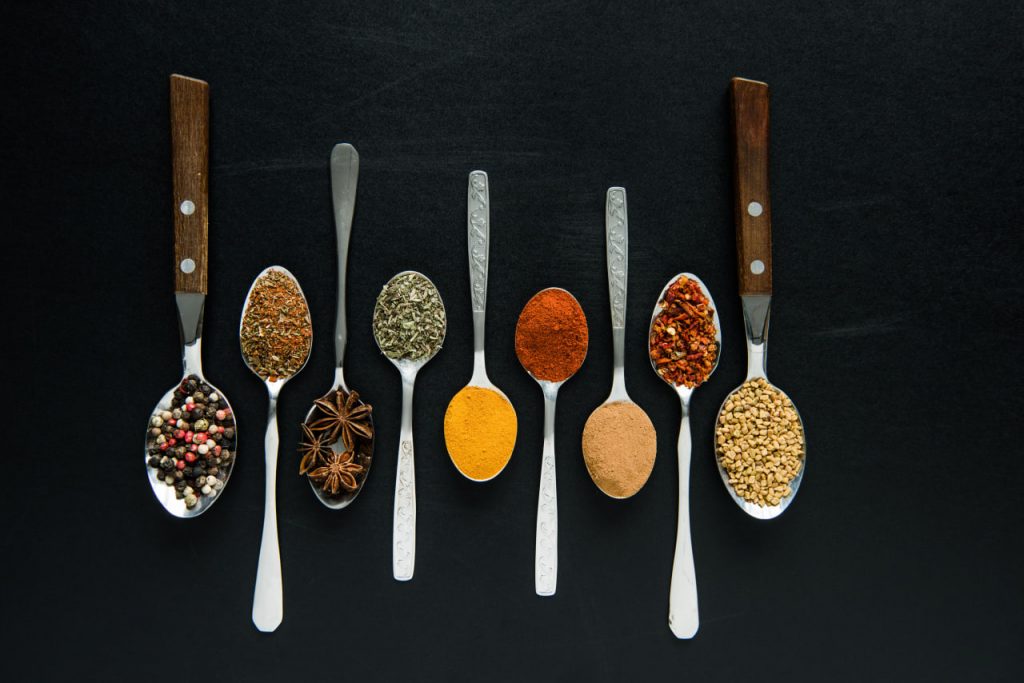Exotic spices hold a unique place in the world of culinary arts. These spices often originate from remote regions, bringing with them rich histories, fascinating cultural significance, and, of course, complex flavors that can transform any dish. In this article, we will take you on a journey through some of the most intriguing and flavorful spices from across Asia, Africa, and beyond, offering a deeper understanding of their origins and how to incorporate them into your cooking.
Turmeric: The Golden Spice of India
Turmeric, with its vibrant yellow hue, is a staple in Indian cuisine and has made its way into kitchens worldwide. Known for its earthy, slightly bitter flavor, turmeric is the key ingredient in curry powders and many other spice blends. But turmeric isn’t just valued for its flavor—it is also celebrated for its medicinal properties, especially its anti-inflammatory effects. Turmeric is often used in traditional medicine and is believed to promote digestion, boost immunity, and even improve brain function. In the kitchen, turmeric pairs beautifully with cumin, coriander, and garlic, making it perfect for curries, rice dishes, and soups.
Za’atar: A Middle Eastern Blend with a Tangy Kick
Za’atar is a popular herb and spice mix in Middle Eastern cuisine. This versatile blend typically includes dried thyme, oregano, sumac, and sesame seeds, giving it a distinct flavor profile that’s both tangy and savory. Sumac, the star ingredient, provides a lemony tang, balancing out the richness of the sesame seeds and herbs. Za’atar is often sprinkled over flatbreads, added to roasted vegetables, or used as a seasoning for meats. You can even mix it with olive oil to make a flavorful dipping sauce or marinade.
Berbere: The Fiery Spice of Ethiopia
Ethiopian cuisine is renowned for its bold flavors, and berbere is at the heart of it. This fiery spice blend includes a variety of hot peppers, garlic, ginger, and aromatic spices like cinnamon, cumin, and cloves. It’s a must-have in dishes like doro wat (a spicy chicken stew) and lentil stew. Berbere adds a complex depth of heat, spice, and sweetness, making it perfect for enriching stews, soups, and even roasted vegetables. Be mindful of its heat—while it can be intense, it brings a remarkable flavor when used in moderation.
Sumac: A Sour Surprise from the Mediterranean
Sumac is a spice that may not be as well-known in Western kitchens but is widely used in Middle Eastern and Mediterranean cuisines. With its vibrant red color and tart, lemony flavor, sumac adds a delightful tanginess to dishes without the sharp acidity of fresh lemon. It’s often used to season meats, salads, and rice dishes, or sprinkled over hummus or yogurt-based dips. Sumac’s subtle sourness also makes it a great addition to spice blends like za’atar, adding extra dimension and balance.
Saffron: The Luxurious Spice of Persia
Saffron, known as the “red gold” of the spice world, is one of the most expensive spices on the planet. Derived from the crocus flower, saffron’s distinct flavor is earthy, slightly sweet, and highly aromatic. It has been used for thousands of years in Persian, Indian, and Mediterranean cuisines, often in rice dishes, stews, and desserts. Due to its high price, it’s typically used sparingly, but a few threads of saffron can transform a dish with its unique flavor and vibrant color. It’s perfect for creating luxurious dishes like paella, risotto, or a decadent saffron-infused dessert.
The Versatility of Exotic Spices in Modern Cooking
While these spices have deep roots in their respective cultures, they’re not just for traditional recipes. Today, chefs and home cooks alike are incorporating exotic spices into modern dishes, from fusion recipes to global-inspired meals. By experimenting with these spices, you can create innovative flavor profiles, giving a fresh twist to your favorite dishes.
For example, try adding a pinch of sumac to a fruit salad for a burst of tang, or mix berbere with roasted sweet potatoes for a spicy kick. Turmeric and saffron can be combined in rice pilafs, creating a beautiful, flavorful dish with a stunning golden hue. The key is to experiment and see how these exotic spices can enhance your everyday meals.
The Health Benefits of Exotic Spices
Exotic spices don’t just add flavor—they also offer a range of health benefits. Turmeric is packed with antioxidants and anti-inflammatory compounds, while saffron has been shown to have mood-enhancing properties. Berbere’s heat and spices can boost metabolism and improve digestion. Sumac is rich in antioxidants and may help reduce inflammation. By incorporating these spices into your cooking, you can enjoy not only delicious meals but also a boost to your overall health.

